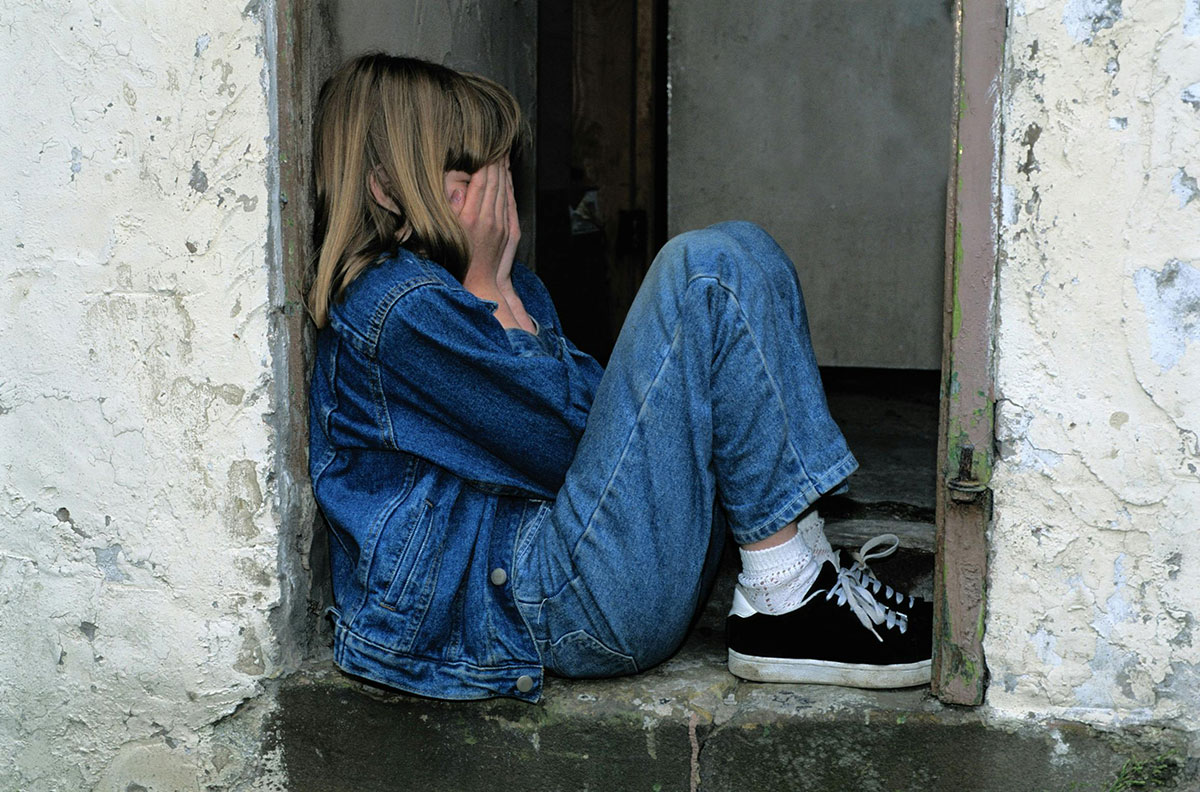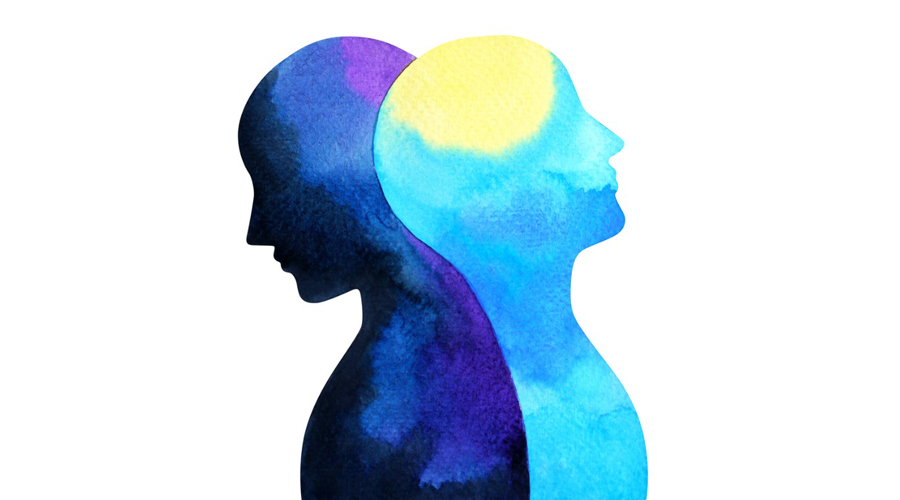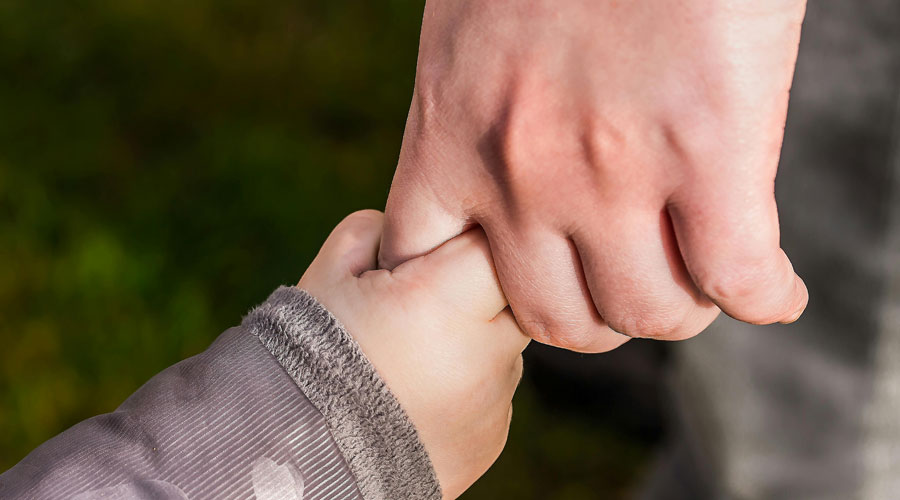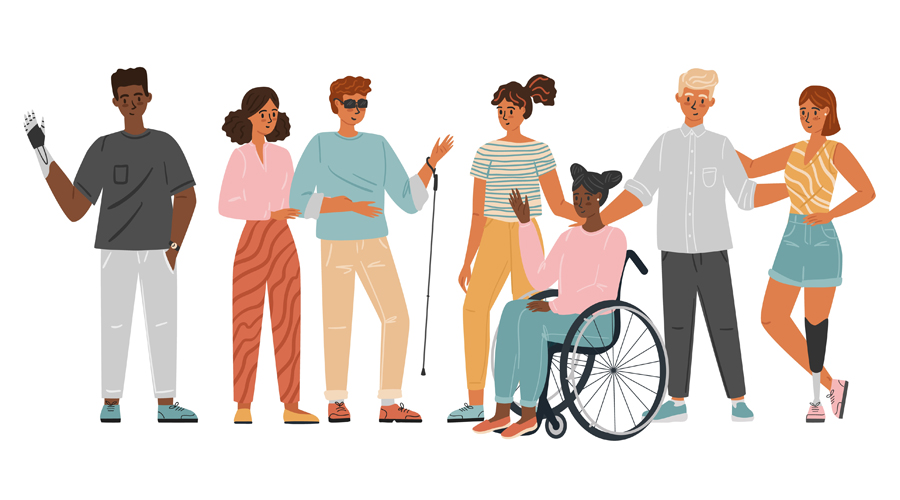Correlation Between Adverse Childhood Experiences and Toxic Stress – Understanding the Impact on Child Development
By Dr. Kate Truitt

Traumatic events in childhood can have a lasting and often invisible impact on a person’s mental and physical health.
Adverse Childhood Experiences (ACEs), as first identified in a groundbreaking study by the Centers for Disease Control and Prevention, are now recognized as early risk factors that contribute to the development of a myriad of health and social problems in young individuals.
Concurrently, toxic stress, a term coined to describe the prolonged activation of the body’s stress response system, has emerged as a significant consequence of ACEs, with far-reaching implications that we are only beginning to grasp fully.
What are ACEs?
Adverse Childhood Experiences (ACEs) refer to stressful or traumatic events that occur in a child’s life, including physical or emotional abuse, neglect, or household dysfunction such as parental substance abuse or mental illness.
These events can be grouped into distinct categories, each with its own set of risks and long-term consequences. Physical abuse may lead to a heightened chronic disease risk, while emotional abuse can significantly impair emotional regulation and the establishment of parental trust.
The original ACEs study identified ten categories, but research has expanded to encompass a broader array of potentially traumatic events.
The primary ten 10 categories are:
- Physical Abuse involves physical harm or injury inflicted upon a child by a caregiver through violent behavior. This can lead to both immediate physical injuries and long-term health issues, such as chronic pain or gastrointestinal issues. It can also instigate emotional and psychological problems, including depression, anxiety, and low self-esteem.
- Sexual Abuse entails any form of sexual contact or behavior with a child for the sexual gratification of an adult or significantly older child. Unfortunately, this often results in severe emotional and psychological distress, including PTSD, anxiety disorders, and depression. Victims may also struggle with issues related to self-worth, sexual dysfunction, and relationship difficulties in adulthood.
- Emotional Abuse consists of actions toward a child that cause emotional harm or distress, including verbal abuse, excessive criticism, or threats. It can result in long-term emotional instability and an inability to cope with stress. Individuals who experience emotional abuse may have eroded self-esteem, leading to anxiety and depression, and cause difficulties in forming healthy relationships.
- Physical Neglect occurs when a child’s basic physical needs, including food, shelter, and safety, are not met or are ignored by the caregivers. This can cause immediate health issues due to malnutrition or lack of medical care and lead to long-term developmental problems and chronic health conditions.
- Emotional Neglect can profoundly affect one’s ability to establish and maintain emotional connections with others and can lead to attachment disorders, low self-esteem, and difficulties in handling emotions. It involves failing to meet a child’s emotional needs, including love, comfort, and affection, leading to feelings of abandonment.
One of the common questions I get on my social media channels is, “Well, I wasn’t abused, I just wasn’t cared for.” I’ve recorded a short video in response to this.
- Exposure to Domestic Violence. Witnesses to acts of violence in the home, particularly between parents or caregivers, which can lead to feelings of fear and insecurity. This can instill chronic anxiety and fear, stunt emotional development, and increase the risk of becoming involved in abusive relationships later in life.
- Household Substance Abuse can promote feelings of neglect and emotional abandonment, lead to financial and legal issues within the home, and increase the likelihood of the child engaging in substance abuse. Living in an environment where drug or alcohol abuse is present can also impact the child’s sense of stability and security.
- Household Mental Illness. Growing up in a household where mental illness is significant and untreated, affects the emotional and sometimes physical safety of the child. There will also be an increased risk of the child developing mental health disorders themselves.
- Parental Separation or Divorce. Experiencing the separation or divorce of parents can disrupt the child’s sense of continuity and security in familial relationships.
- Incarcerated Household Member can introduce stigma, social isolation, and financial hardship into a child’s life, potentially leading to academic struggles and emotional distress.
Each of these categories represents a potential trauma that, when experienced in childhood, can alter a child’s physical, emotional, and psychological development. Recognizing and understanding these ACE categories allow for a deeper appreciation of their significant and lingering effects on individuals and societies.
In recent years, researchers have expanded the concept of Adverse Childhood Experiences (ACEs) to include additional categories that broaden our understanding of early life stressors. These newly identified categories include:
- Bullying often leads to severe emotional distress, including anxiety, depression, and an increased risk for suicidal ideation. Victims may also struggle with low self-esteem and difficulties in establishing trusting relationships.

- Community Violence exposes individuals to traumatic stress, manifesting in symptoms of post-traumatic stress disorder (PTSD), anxiety, and depression. It can also foster a pervasive sense of insecurity and hypervigilance that impacts daily functioning.
- Displacement and Migration can result in a profound sense of loss and identity disorientation. The psychological effects include anxiety, depression, and a feeling of rootlessness. The lack of a stable support network exacerbates these emotional struggles.
- Discrimination leads to increased stress levels, diminishing mental health, and contributing to feelings of alienation and hopelessness. It can also impede access to resources and opportunities, reinforcing cycles of poverty and inequality.
- Poverty and Economic Hardship are associated with chronic stress, which can impair cognitive development and emotional regulation in children. Long-term, this stress undermines physical health, contributing to a higher incidence of chronic conditions such as diabetes and heart disease. Growing up in conditions of poverty, which includes experiencing food insecurity, inadequate housing, and limited access to healthcare.
How Do ACEs Impact the Developing Brain?
The young brain, in its formative years, is highly susceptible to environmental influences, shaping a child’s behavior, learning, and health into adulthood. To learn more about how your childhood impacts your adulthood, I invite you to watch this 1-minute video about how childhood trauma impacts your adulthood on my YouTube channel.
ACEs have the potential to disrupt healthy brain development, leading to a pre-disposition towards mental health disorders.
I’ve compiled some of the latest research findings on the impact of ACEs on individuals in my upcoming book, Keep Breathing, now available for pre-order and releasing April 2nd, 2024.
The events of our childhood are far more impactful to us than meets the eye (Felliti et al., 1998; (Burke Harris, 204). Since that original study, additional research from CDC (2021) has found that 61 percent of the population has experienced at least one ACE, while 16 percent has experienced four or more.
ACEs not only cast a long shadow over our formative years but also wield a lasting influence on our adult lives. They propel us into a precarious realm of heightened vulnerability where the odds stack against us, increasing the likelihood of chronic conditions in adulthood, from cardiovascular disease, stroke, and cancer to asthma, chronic obstructive pulmonary disease, kidney disease, diabetes, and the burden of overweight or obesity. Sadly, the impact doesn’t stop with health adversities. ACEs also infiltrate our emotional well-being, taking a toll on mental health and leading us toward an assortment of risky health behaviors (Merrick et al., 2019; Nelson et al., 2020; Suglia et al., 2018). The likelihood of smoking and alcohol use is also increased significantly, with those reporting four or more ACEs being twice as likely to smoke or use large amounts of alcohol and six times as likely to engage in drinking behavior that negatively impacts their lives (Hughes et al., 2017). The odds of opioid abuse are three times higher for individuals who have four or more ACEs (Quinn et al., 2016), and the risk of engaging in suicidal behavior is thirty times higher (Hughes et al., 2017). In short, if you have struggled or are struggling in the wake of your own ACEs, please know that you are not alone.
Children who experience adversity may struggle with a variety of emotional and behavioral challenges, from regulating their feelings to forming stable relationships.
ACEs can also hinder learning, memory, and executive functioning, with lasting implications for academic achievement and the ability to succeed in life.
The physical repercussions of toxic stress are perhaps the most alarming, with extensive research linking ACEs to a myriad of health issues, including heart disease, cancer, and substance abuse.
It is truly concerning how these negative experiences can have such a profound impact on our overall well-being.

How Can We Recognize and Address ACEs In Our Community?
It starts with awareness—educating parents, caregivers, educators, and healthcare professionals about the signs and consequences of ACEs. Screening for ACEs in healthcare settings can help identify those at risk early on. Offering support through counseling services, community programs, and resources aimed at mitigating stress and providing coping strategies is crucial.
Schools can play a pivotal role by implementing trauma-informed teaching practices and creating safe, supportive environments. Collaboration across sectors, including public health, education, social services, and community organizations, is essential to develop comprehensive strategies that address the root causes of ACEs and promote resilience and recovery among affected individuals.
Professionals and caregivers can look for indicators such as:
- Withdrawal from social interactions
- A decline in academic performance
- Uncharacteristic behaviors such as aggression or hyperactivity
Additionally, physical symptoms like frequently unexplained aches and chronic fatigue can be telltale signs.
For a thorough evaluation, gathering a comprehensive history encompassing the child’s environment, relationships, and any significant changes or stressors becomes instrumental.
These observations and interactions can enable timely and effective intervention.
The Interplay Between ACEs and Toxic Stress
ACEs such as physical, emotional, and sexual abuse; neglect; and household dysfunction serve as catalysts for chronic stress responses in children. This continuous activation of the stress response system can lead to toxic stress, a condition where the body’s stress management systems are overwhelmed and unable to return to a relaxed state.
Toxic stress disrupts the development of brain architecture and other organ systems and increases the risk for stress-related disease and cognitive impairment well into the adult years. Consequently, individuals who have experienced high levels of ACEs are at a significantly increased risk for various health conditions, including mental health issues, substance abuse, and chronic diseases. The impact of toxic stress underscores the urgent need for prevention and intervention strategies that can mitigate the effects of ACEs and promote resilience and well-being.
Understanding adverse childhood experiences (ACEs) and toxic stress plays a significant role in shaping effective prevention strategies. By addressing these underlying factors early on, we can mitigate the impact of trauma and promote resilience. For instance, implementing comprehensive support systems in schools to identify and address ACEs, or providing trauma-informed training to healthcare professionals, are examples of prevention strategies that can make a significant difference in individuals’ lives. Additionally, promoting healthy coping mechanisms and self-care practices can help individuals build resilience and cope with the effects of ACEs.
How to Overcome the Effects of Adverse Childhood Experiences
It begins with the recognition of the experiences and their impacts.
Adults can seek therapy, which may include evidence-based modalities such as Cognitive-Behavioral Therapy (CBT), Eye Movement Desensitization and Reprocessing (EMDR), or the Healing in Your Hands Programs to process and heal from past traumas.
CBT is a structured, present-focused psychotherapy directed at solving current problems and teaching clients skills to modify dysfunctional thinking and behavior. It is a well-regarded treatment approach for a spectrum of mental health concerns, including those stemming from ACEs.
Developed specifically to treat trauma, EMDR is an interactive psychotherapy technique used to relieve psychological stress. It involves eye movements, similar to those one would encounter during periods of REM (rapid eye movement) sleep, believed to be the state in which trauma processing occurs.
The Healing in Your Hands Program is an integrated approach to trauma recovery that combines the principles of neuroplasticity, mindfulness, and emotion-focused therapy to create life-long change for trauma survivors. Its core component is the Havening Technique®, a psychosensory method involving the use use of havening touch to reduce stress and decrease the intensity of traumatic memories. In this YouTube video I talk about how the Havening Touch® can actually shift the way our brain functions in the moment of emotional distress or stress.
The program’s comprehensive model supports individuals through every step of their healing process. If this is your first time hearing about this healing modality, I invite you to watch this Introductory YouTube video about the Healing in Your Hands Program to learn more about it.
For mental health practitioners, we will also be hosting upcoming workshops for the Healing in Your Hands Program:
- Havening Techniques Training & Certification Program – In Person, Anchorage Alaska June 2024:
- Havening Techniques Live Online Workshop
Building a strong support system of friends, family, or, support groups can also provide the necessary emotional backing for those who have adverse childhood experiences.
Practicing mindfulness, relaxation techniques, and self-care are instrumental in managing stress and promoting mental health. Committing to a healthy lifestyle that includes regular exercise, balanced nutrition, and adequate sleep can also enhance physical and psychological resilience.
Through these strategies, those affected by ACEs can work towards a more empowered and fulfilling life.
For additional mental health resources:
Connect with me on my social media accounts:
YouTube: https://www.youtube.com/@DrKateTruitt
TikTok: https://www.tiktok.com/@dr.katetruitt
LinkedIn: https://www.linkedin.com/in/drkatetruitt/
Instagram: https://www.instagram.com/dr.katetruitt/
Facebook: https://www.facebook.com/DrKateTruitt
Sign up for our newsletter for the latest mental health updates, exclusive resources to support your well-being, and insider news on our upcoming events and workshops.
Grab a copy of my book, Healing in Your Hands: Self-Havening Practices to Harness Neuroplasticity, Heal Traumatic Stress, and Build Resilience. Within its pages, you will find powerful client stories, insights from the field of neuroscience, and tools to create a complete and holistic self-healing program that you can use.
Pre-order my newest book, Keep Breathing: A Psychologist’s Intimate Journey Through Loss, Trauma, and Rediscovering Life. Part memoir and part scientific exploration, it’s my personal account recounting my experiences and healing journey, including adverse childhood experiences and traumatic grief. Along the way, you will learn about the neuroscience around trauma and stress.
References
- Truitt, K. (2024). Keep Breathing: A Psychologist’s Intimate Journey Through Loss, Trauma, and Rediscovering Life. Bridge City Books.
- Center on the Developing Child at Harvard University. (n.d.). ACEs and Toxic Stress: Frequently Asked Questions. Retrieved February 23, 2024, from https://developingchild.harvard.edu/resources/aces-and-toxic-stress-frequently-asked-questions/
- Kansas State University, Frontier District. (n.d.). Early Childhood Development: Building Blocks of Development [PDF]. Retrieved February 23, 2024, from https://www.frontierdistrict.k-state.edu/family/child-development/docs/earlychildhood/MF3493.pdf
- Center on the Developing Child at Harvard University. (n.d.). Toxic Stress. Retrieved February 23, 2024, from https://developingchild.harvard.edu/science/key-concepts/toxic-stress/
- Herndon, M., Waggoner, C. (n.d.). Building Resilience: Reducing the Impact of Adverse Childhood Experiences [PDF]. Retrieved February 23, 2024, from https://files.eric.ed.gov/fulltext/EJ1293704.pdf















